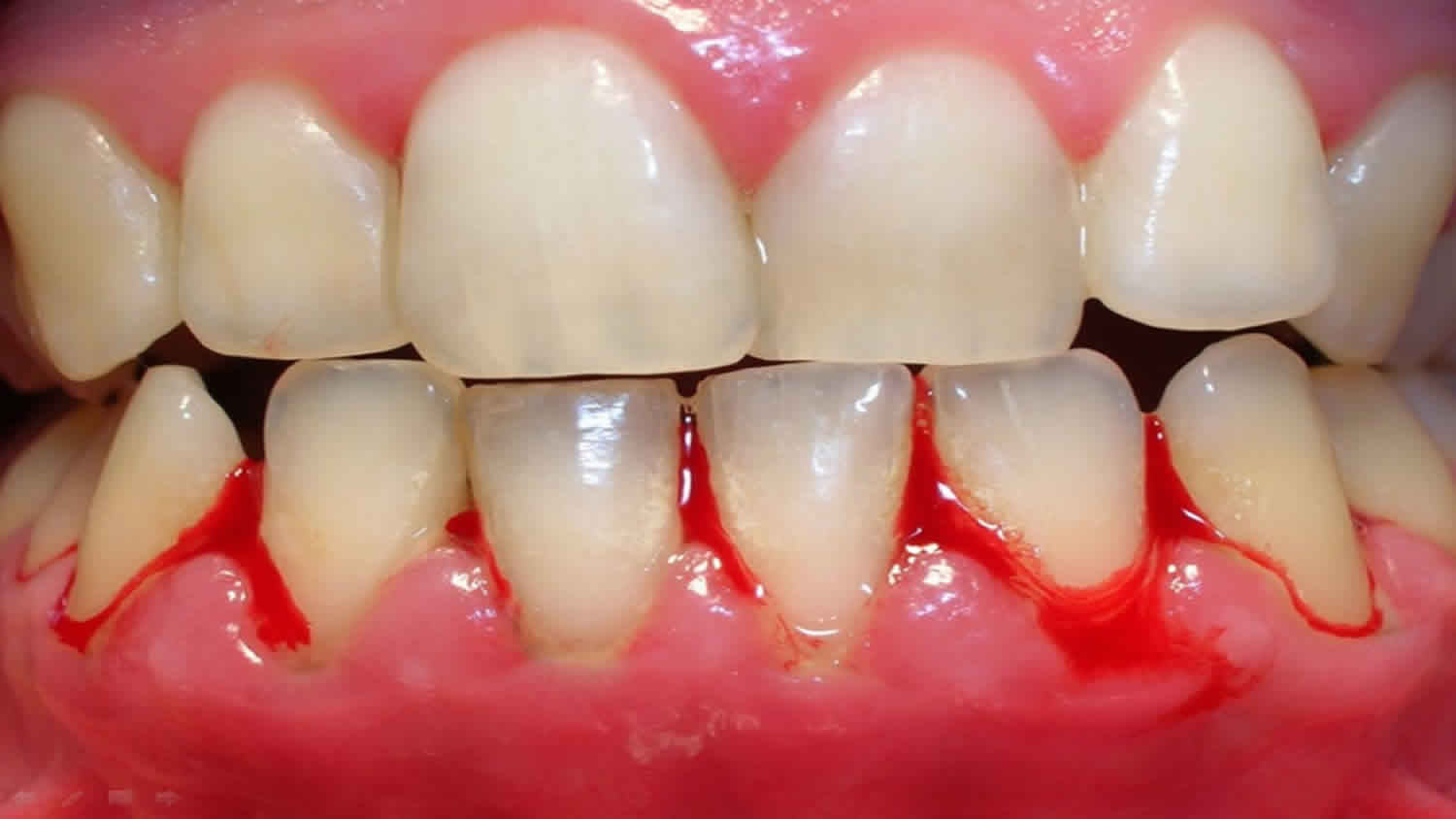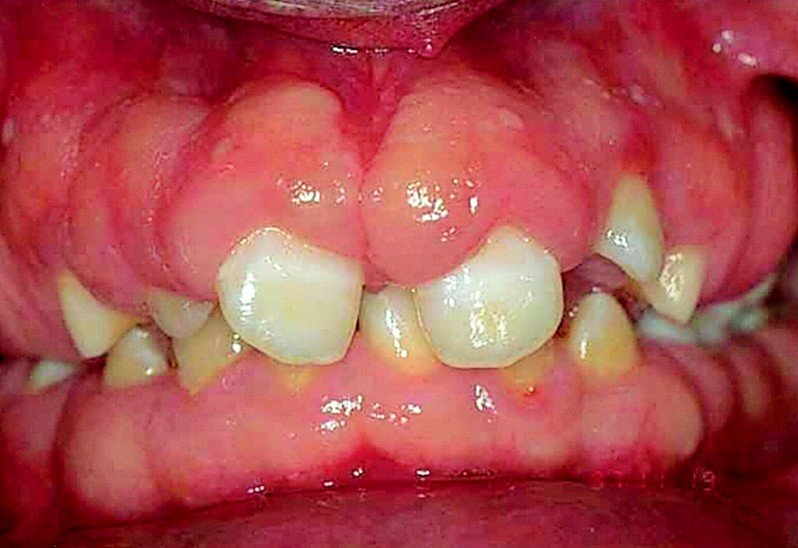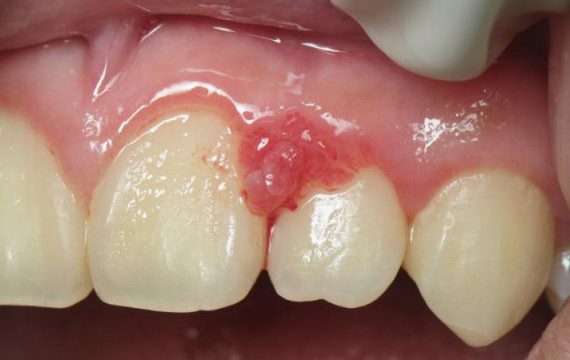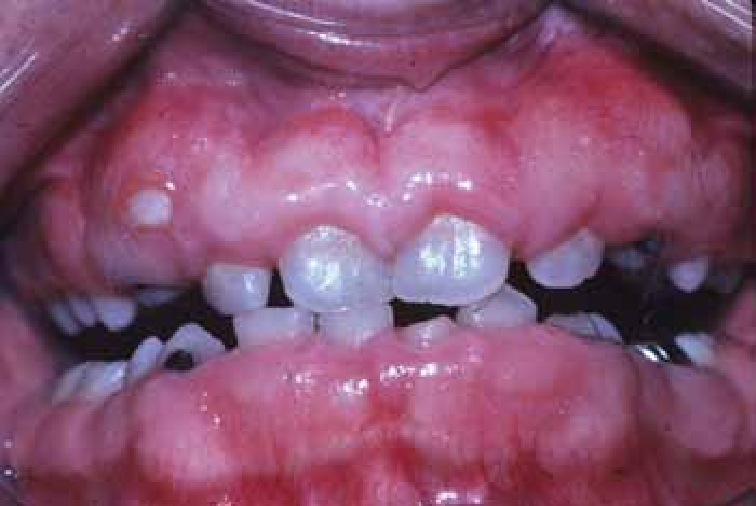Gingival hyperplasia is a gummy smile that develops over time. You may think the size and the thickness of the gums remains relatively stable, but can the gums grow later in life? It turns out they can. However, only in particular circumstances.
If you feel your gums are bigger than you’d like, it might either be a genetic cause, just like some people are tall and some are short. However, it could also be that your gums are overgrowing because something they are exposed to.
There are a few situations when the gums can grow and it causes the appearance of big gums or puffy inflamed gums. Let’s talk about some non-genetic causes of big gums.
What is Gingival Hyperplasia?
Gingival hyperplasia is an overgrowth of gum tissue around the teeth (also known as the gingiva). There are a number of causes of gingival hyperplasia, but the most common is poor oral hygiene. It’s the most common cause, and by far the easiest to correct. The second most common cause of gingival hyperplasia is as a side effect of certain medications. We’ll discuss more on the certain types of medications later.
So why does any of this matter? If left untreated, gingival overgrowth can causes periodontal disease because it makes it difficult to clean under big gums that are puffy and inflamed over the teeth. The condition can also affect the alignment of your teeth as the gums become a spongey foundation for the roots of the teeth. And finally, big gums are not looked upon as a desirable cosmetic sign. When the gums are overgrown, inflamed, and puffy it makes the smile appear less healthy. Studies are now showing that poor oral health can have a large impact on overall health.
There are a few different terms for gingival hyperplasia some that are technical than others. You may have heard the condition also referred to as:
- gingival overgrowth
- gum enlargement
- hypertrophy
- hypertrophic gingivitis
- inflamed big gums
Gingival Hyperplasia Symptoms
Gingival hyperplasia can be painful, but it can also be a silent condition that is not painful. Because the condition sometimes is not painful, gingival hyperplasia can sneak up on people, being unnoticeable until advanced stages.
The most common and defining characteristic of gingival hyperplasia is having red, bleeding gums. The gums appear much larger than they were previously, and can often cover a significant portion of the teeth.
The condition affects oral health, and also overall health. The link is because when the gums are puffy and oversize, it inhibits the ability to clear around the teeth affectively. When plaque collects in the fold of the gums over the teeth (called the gingival pocket), it causes periodontal disease. A significant amount of new research is showing that periodontal disease is linked to increased risk of cardiovascular disease and neurological disease like Alzheimer’s Disease or Parkinson’s Disease. It is eye opening that so many conditions can be linked to the health of our gums, but that’s what the research is now showing us.
Other symptoms associated with gum overgrowth include:
- tender gums
- inflammation of the gums
- spontaneous gum pain or pain when brushing
- bad breath
- plaque accumulation on the teeth
In more severe cases, the gums can completely cover the teeth. You can imagine how it would be difficult to chew, smile, speak, or clean the teeth if the gums overgrew that much. If gingival hyperplasia happens during the ages of 5 to 12, it could affect the eruption of the adult teeth. It should be comforting to know that there is usually a good window of time before gingival overgrowth gets to this point, so there is plenty of opportunity to intervene before this severity happens.
Causes of Gingival Hyperplasia
There are four primary categories of causes of gingival hyperplasia. Let’s explore each one individually.
The Gums are Enlarged Because of Inflammation

The gums can become inflamed due to plaque buildup. What happens is the gums become irritated and the immune system shuttles different inflammation agents to try to combat the plaque. In their defense against the plaque, the result is the gums enlarge, become puffy, tender, appear more red, and often bleed.
When the gums become inflamed due to plaque, it can be in only a localized area of the mouth, for example if you got something caught between the teeth. However, it can also be the overall mouth if the person is failing to brush and floss consistently.
It’s important to understand that when the gums are overgrown from plaque, the gums will be bigger initial from inflammation, but over time the gums will begin to recede as the inflammation breaks down bone and gum tissue long term.
Here’s the good news. Although the gums enlarging from inflammation is one of the most common causes of gingival hyperplasia, it is all the easiest to resolve. The condition usually resolves with effective oral hygiene practices (tooth brushing, flossing) to remove the plaque, residue, and bacteria collecting on the teeth.
Big Gums Causesd as a Side Effect of Medications

As is common in life, we try to correct one issue and another pops up. Patients who take certain medications may develop gingival overgrowth. Common medications that can cause this overgrowth include:
- antiseizure drugs (example: Phenytoin)
- immunosuppressants (example: Cyclosporin)
- calcium channel blockers, or drugs used to treat high blood pressure and other heart-related conditions (example: Procardia)
And once against, the good news is that medication-induced gingival hyperplasia typically will resolve when the medication is discontinued.
If the medication cannot be discontinued, treatment such as surgical excision may be done to help maintain the overgrowth while the patient is on the medication. surgical removal of the excess gingiva (gingivectomy) may be performed but the condition will likely recur. The condition is also affected by the amount of plaque on the teeth, so by increasing oral hygiene measures the overgrowth can be somewhat maintained and the severity reduced.
Systemic Causes of Gingival Enlargement

The inflammation of the gums can be an initial sign of a number of health conditions. During times of pregnancy, hormonal imbalances, and leukemia for example the gums may appear puffy, may bleed, and may be enlarged. Other conditions that can affect the gum presentation are anemia, HIV, crohn’s disease, diabetes, lymphoma, and vitamin deficiencies.
Gingival enlargement associated with these types of systemic conditions usually resolves once the underlying condition is treated. In the case of pregnancy, the gums will begin to return to normal late in the term and typically return to normal after the delivery of the child.
Hereditary Gingival Fibromatosis

Hereditary Gingival Fibromatosis is the only genetic cause on this list and it is a rare. The condition affects only 1:350,000. It usually develops during childhood, although some cases may not become evident until adulthood.
What happens with hereditary gingival fibromatosis is that the gums slowly enlarge due to excessive collagen production. The gums appearing firm, pale pink, and non-tender.
The condition is typically treated by a gummy smile specialist or periodontist by surgically removing the gingival overgrowth to avoid displacement of the teeth or interference with the eruption of permanent teeth. In some cases the repeated surgical removals may be required if the condition reoccurs.
Treatment of Gum Overgrowth
The treatment of gingival hyperplasia often involves controling the underlying cause. In many cases, when a patient improves their oral hygiene some of the effects of inflammation that cause gingival overgrowth will be removed. If the cause is from medication or an underlying medical condition, then a periodontist or gum specialist may recommend a surgical removal.
The treatment for removal of extra gum tissue can be completed with either a laser or a scalpel. So let’s address a common concern many patients ask about at my office. Many patients request the use of a laser because they believe the procedure will be less painful or they believe a procedure heals faster with a laser. However, the recovery for a gum reduction which is relatively mild is about the same regardless whether it is performed with a laser or a scalpel.
Some procedures used to remove overgrown gums include:
Scaling and Root Planning: You may have heard this procedure also referred to as a periodontal deep cleaning or abbreviated SRP. When hygiene is a factor in creating inflammatory gum overgrowth, it may be necessary to remove the bacteria and calculus that firmly attach to the teeth below the gumline. It’s also important to have a clean environment prior to removing gums surgically to allow for ideal healing. SRP is generally accomplished over two visits with local anesthetic to numb the gums.
Periodontal Flap Surgery: When hygiene is a factor and the periodontal condition has become more severe, it may be recommended to do a periodontal flap surgery. Flap surgery allows the gum specialist to surgically access the plaque, clean along the gums and bone, and then reposition the gums so that they are reduced in height.
Gingivectomy. A gingivectomy is most likely what you envisioned when you think of reducing gum overgrowth and improving the appearance of a gummy smile. A gingivectomy is one of the most common surgical procedures for improving big gums, regardless of the cause. During the procedure, the gum specialist removes a portion of the gums and reshapes the gums. The procedure can be completed with a scalpel or laser under local anesthetic. Healing for a gingivectomy takes about 2-3 days of mild tenderness.
The Top Questions about Gingival Hyperplasia Answered
Q: What drugs cause gingival hyperplasia?
A: The most common medications that cause gingival hyperplasia fall into three categories:
1. Phenytoin: an anticonvulsant medication used to treat various types of seizures and convulsions.
2. Cyclosporine: an immunosuppressant medication which is commonly prescribed for autoimmune conditions and after transplants such as bone marrow or other major organs. Some autoimmune conditions in which immunosuppressants may be prescribed are psoriasis, atopic dermatitis, rheumatoid arthritis, and lupus.
3. Calcium channel blockers: These are heart medications like nifedipine, amlodipine and verapamil. These cardiovascular are used to help patients with conditions like hypertension, chest pains, history of heart attack, and irregular heartbeats.
Q: What is the probability of developing gingival enlargement if I am taking one of the above-mentioned medications?
A: The likelihood of medication-induced gingival enlargement depends on the medication.
Studies show that long-term use of phenytoin is associated with gingival hyperplasia in about 50% of cases.
For cyclosporine the prevalence is about 25-30% in adults, and about 70% prevalence in children.
For calcium channel blockers, the prevalence varies depending on the medication. One of the most common calcium channel blockers is nifedipine which has a prevalence of gingival hyperplasia of 6-15%.
Q: What should I do if I notice my gums are enlarged?
A: If your gums seem larger than they were before or have become red, puffy, or are prone to bleed, you should schedule an appointment with your dentist.
Most cases of gingival enlargement are easy to identify the cause and treat when evaluated early. In rare cases, the gums may indicate the early signs of a more severe medication condition. The gums can serve as an early indication to gather further tests such as blood studies or a biopsy early in the course of the condition.
Q: Is gingival overgrowth contagious? Can I catch it from kissing?
A: No, these conditions are not infectious.
You cannot catch gingival hyperplasia from kissing and cannot pass it on. However, if the gingival overgrowth is from inflammation from bacteria, it is possible to affect the oral health of a partner by sharing periodontal bacteria through saliva.
Q: How to reduce the severity of gum overgrowth from gingival hyperplasia?
A: Brush and floss consistently like your gums depend on it.
Your ability to practice effective oral hygiene measures serves as the first line of defense in reducing the risk and negative effects from gingival overgrowth. And don’t worry, you are not on your own. Your dental team will monitor and advise you on what is best. For example, it may be recommended to go more frequently for professional cleanings or may be instructed on ways to improve your brushing technique.
For medication-induced gingival enlargement, your physician may be able to substitute the medication to reduce your risk of developing gingival enlargement. For gingival enlargement associated with a systemic condition, management of the underlying systemic condition usually results in partial or complete resolution of gingival enlargement.
Gingival Hyperplasia: Putting It All Together
About 15% to 25% of the population have excess gum that is commonly called a gummy smile. The feature of a gummy smile can create significant amount of self consciousness. If you are looking at your smile, and wondering is my gummy smile gingival hyperplasia, it’s important to realize that gingival hyperplasia is overgrowth linked to a underlying cause. A gummy smile may also just be the shape and size of the gums, similar to how some people are tall and some are short.
The importance to recognize with gingival hyperplasia is that it is important to recognize and treat the underlying cause for periodontal health. A gummy smile is different because often it doesn’t affect periodontal health, and is corrected when it is a cosmetic concern for the patient.
Regardless the cause of a gummy smile, it is a good idea to discuss it with you dentist to gather their opinion. The dentist may recommend to watch the condition or may recommend treatment options available to you. Some dentists are able to treat gingival hyperplasia at a general dentistry office, but it is important to realize that not all do. The general dentist will typically be able to refer you to a periodontist or the best gummy smile expert in your area.


